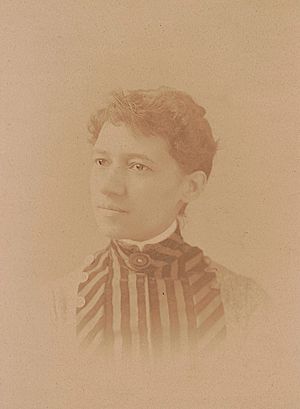League of Women for Community Service facts for kids
The League of Women for Community Service is an important group of Black women in Boston, Massachusetts. It was started in 1918.
Contents
History of the League

The League of Women for Community Service began in 1918. Its main goal was to help African American soldiers and sailors during World War I. At that time, Black people were often not allowed in many public places.
Helping Soldiers and Sailors
Because of this unfair treatment, the League formed the "Soldiers Comfort Unit." This unit had different teams. They helped with things like publicity, welcoming visitors, and providing entertainment. They also helped with music, supplies, and even knitting for the soldiers.
Important Leaders and Members
The League's first president was Maria Baldwin. She was a very important African American educator. Maria Baldwin led the group until she passed away in 1922. Other well-known members included Josephine St. Pierre Ruffin, Florida Ruffin Ridley, and Maud Cuney Hare.
The League's Headquarters
At first, League meetings were held in members' homes. In January 1920, the League bought its own building. This building is a townhouse located at 558 Massachusetts Avenue in Chester Square.
A Home with a Special Past
The townhouse was built in 1857 or 1858. It was first owned by William and Martha Carnes, who were abolitionists. They used their home as a stop on the Underground Railroad. This was a secret network that helped enslaved people find freedom. The League bought the home on January 30, 1920. They bought it from Eliza Farwell, whose husband had owned the house before.
Expanding Community Services
After World War I ended, the League started offering more programs. They provided social services for Boston's Black community. In the 1930s, the city's Welfare Department even placed a social worker in the League's offices.
Programs for Students and Families
The League also helped with a school lunch program. This program was for students at the Dwight School. The Dwight School is now called the Hurley School. The Works Progress Administration (WPA) also set up Boston's first community reading and game room in the building's basement.
Supporting College Students
The League also offered housing for students. Many Black students were not allowed to stay in college dorms nearby because of segregation. Coretta Scott King, who later became a famous civil rights leader, stayed at the League's headquarters. She lived there in the early 1950s while she was studying at Boston Conservatory.
The League Today
The League of Women for Community Service is still active today. In 2021, they received a grant to help restore their building. This grant came from the National Trust for Historic Preservation's African American Cultural Heritage Action Fund.
Scholarships and Archeological Discoveries
The League also helps students go to college. Each year, they give out Maria L. Baldwin Scholarships. These scholarships go to young women of African American descent. They must be from the Roxbury and Dorchester neighborhoods of Boston.
In 2022, Boston's Archeological Program chose the yard behind the League's building for an archeological dig. They hoped to learn more about the first owners of the building. They also wanted to learn about its role in the Underground Railroad. And they hoped to discover more about the early history of the League itself.
See also
- Military history of African Americans#World War I and Interwar Period

